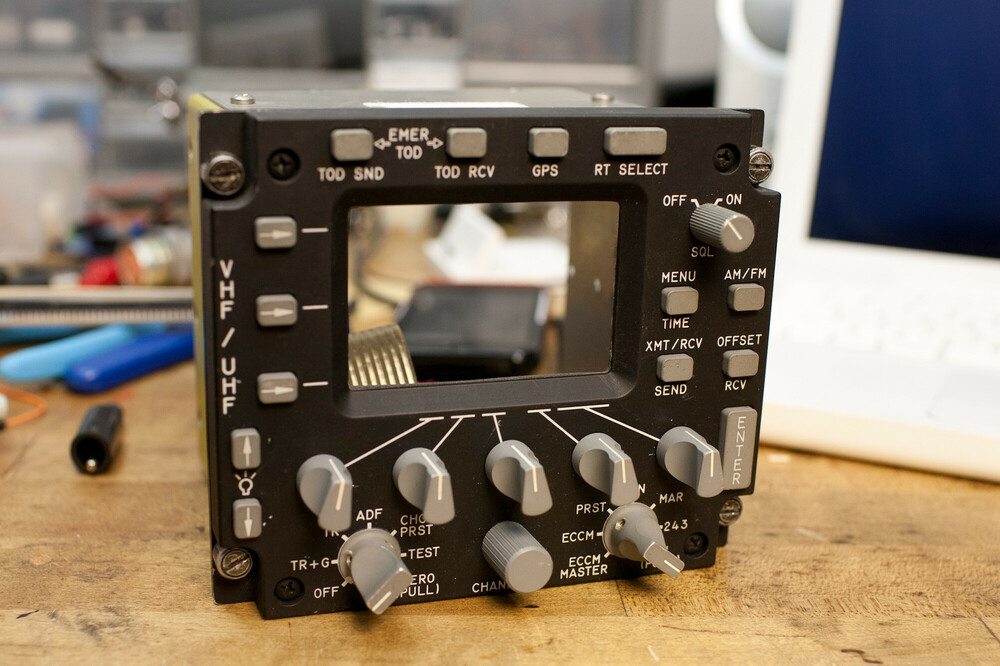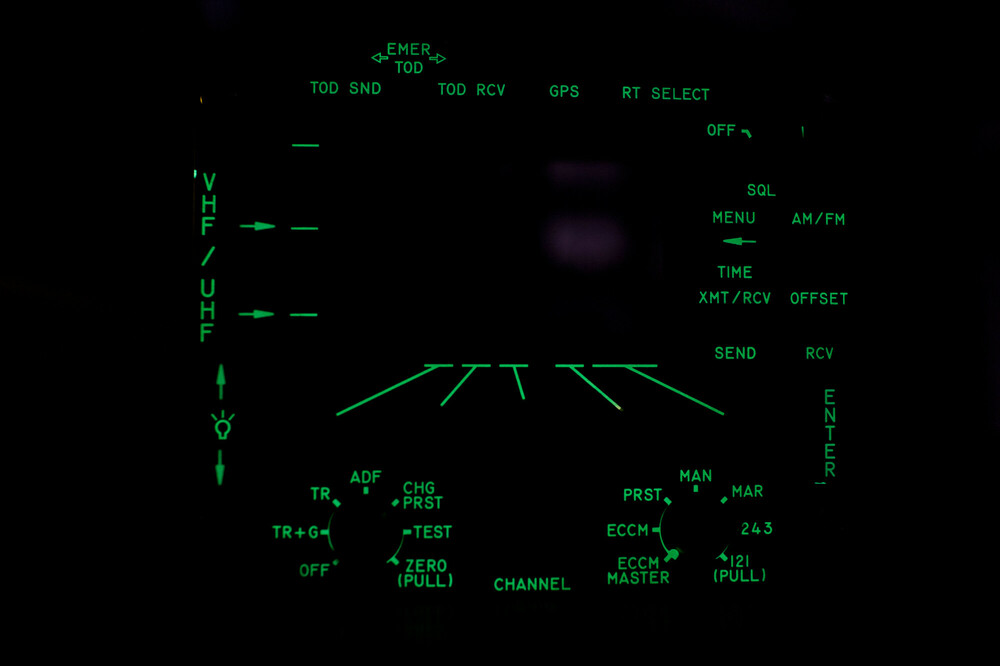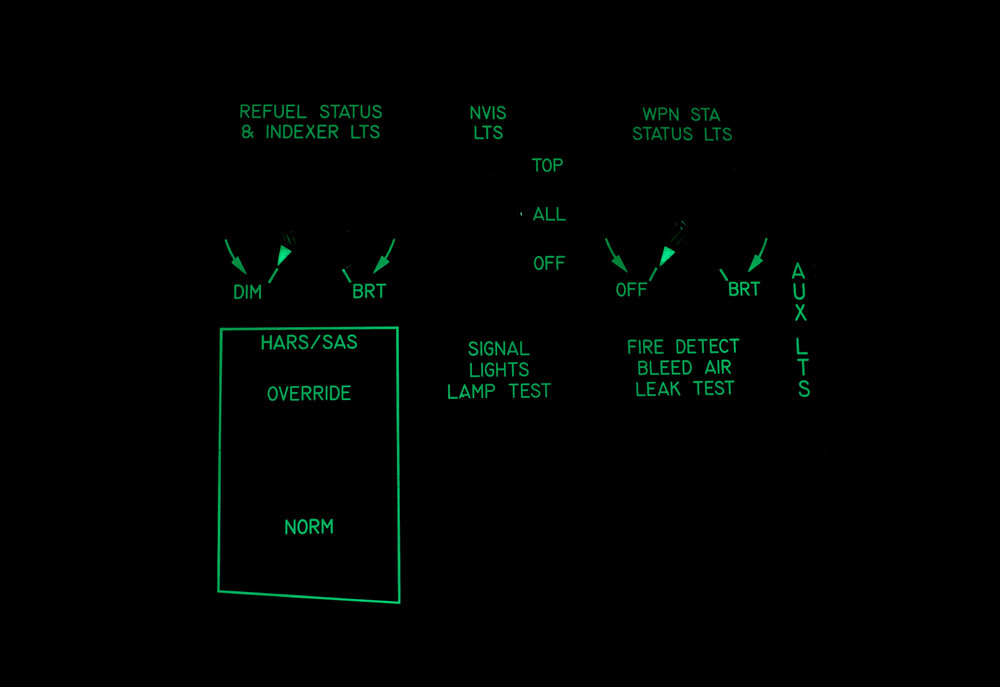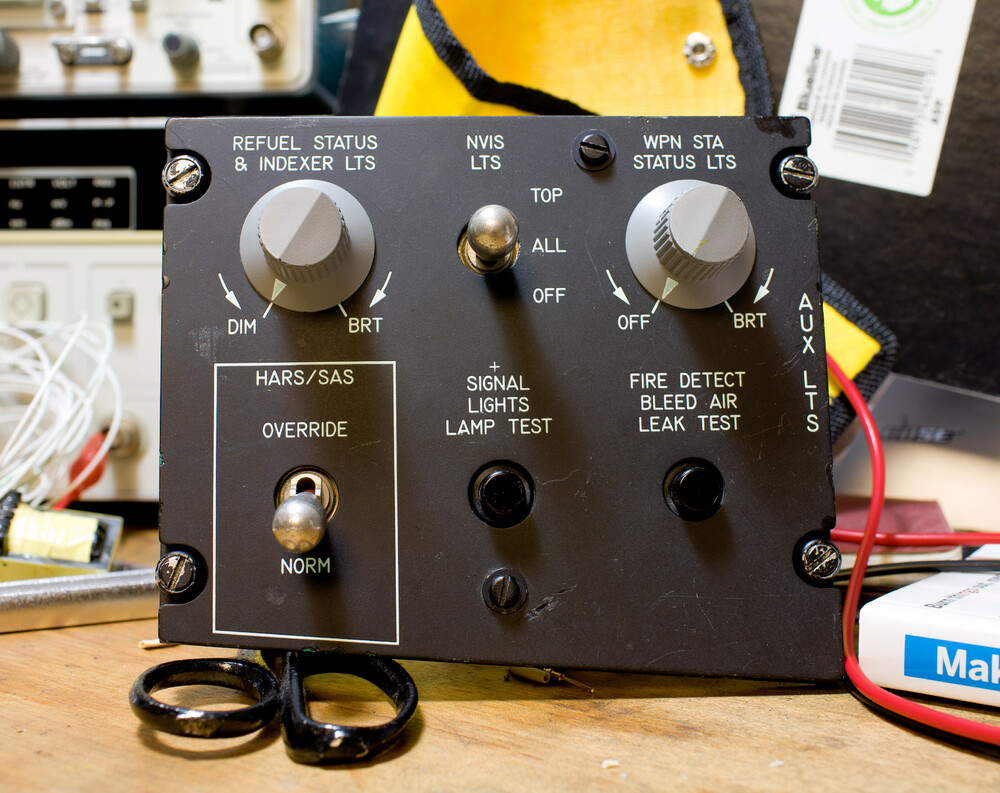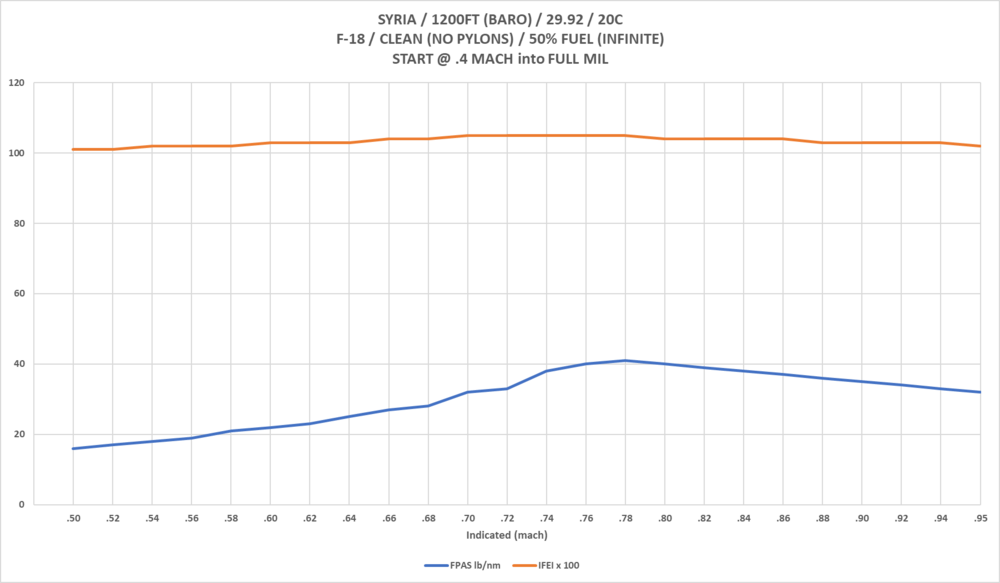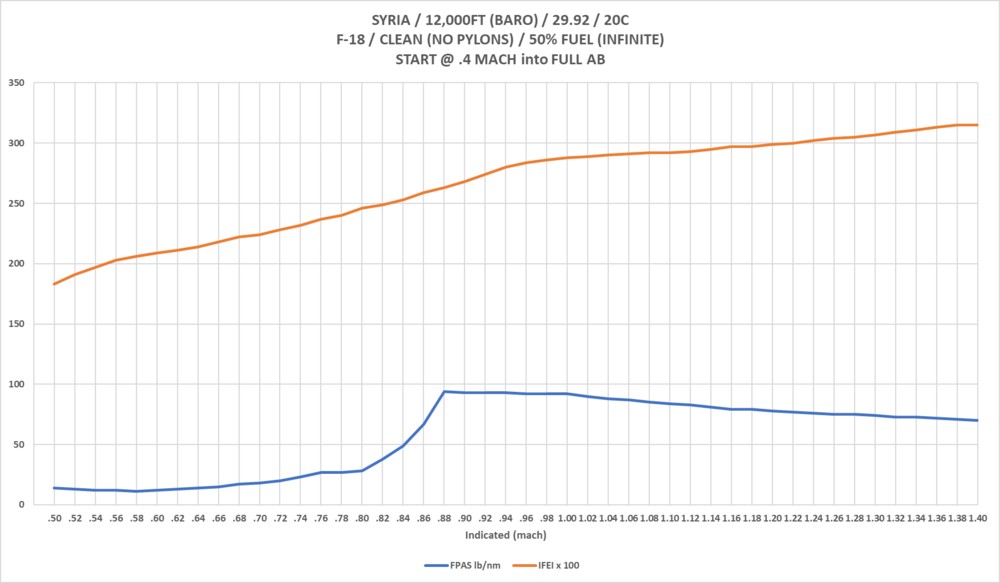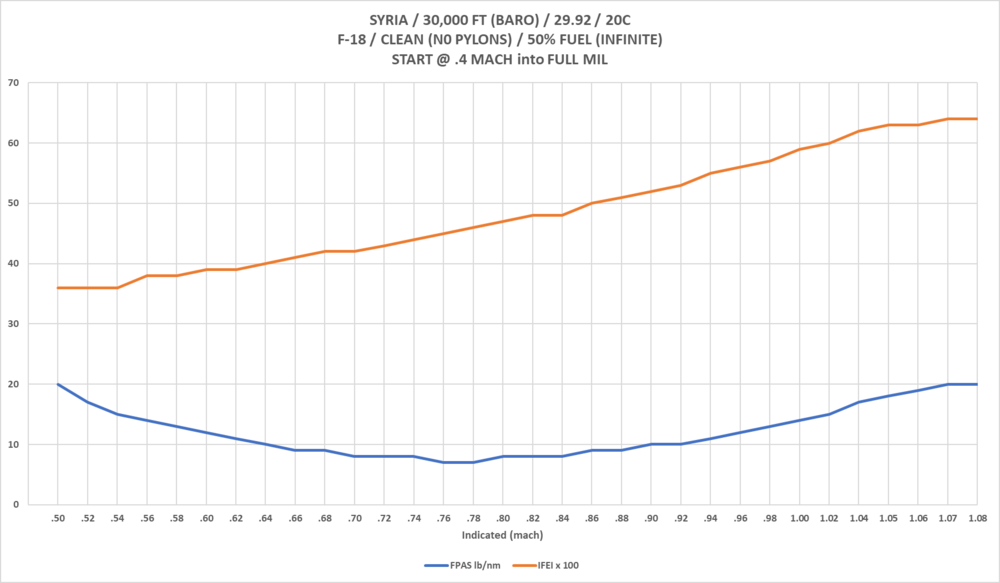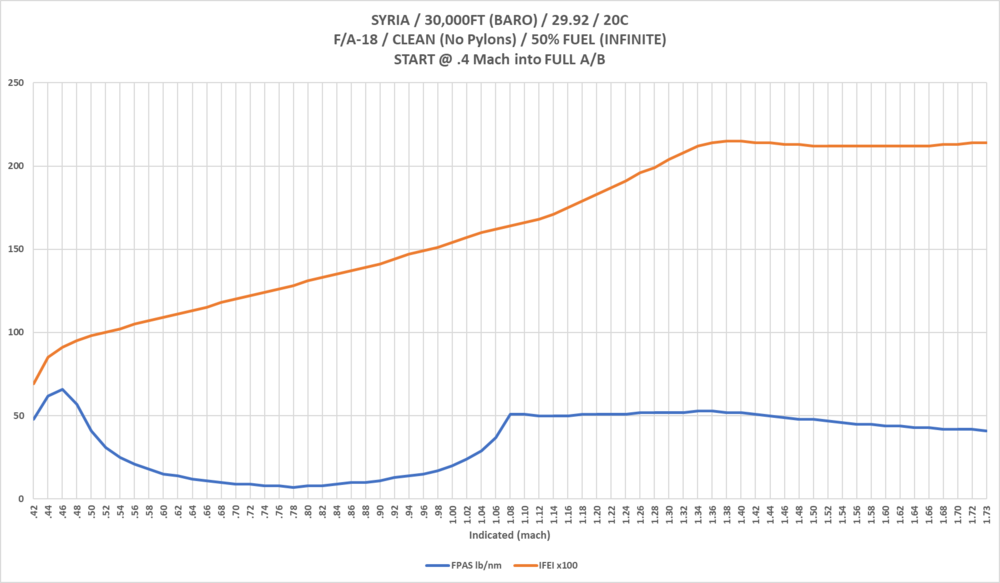-
Posts
279 -
Joined
-
Last visited
About KLaFaille
- Birthday 05/25/1981
Recent Profile Visitors
The recent visitors block is disabled and is not being shown to other users.
-
Yep. I have experienced the same behavior in all autopilot modes where the plane trims the roll automatically, including HSEL. When doing CAP, I used like orbiting up around 45k - 48k and found the plane oscillating on my first fight after the update. I've had it start oscillating a couple degrees either way and then increasing to nearly 40 degrees as it fails to capture the heading. It reminds me of the wing-rocking autopilot bug on the A320 when MSFS first released.
-
It influences the operation of the AOA indexer's on-speed light and serves as a reminder to set up the aircraft appropriately for landing. If you are gear down for a carrier approach without the hook deployed, the on-speed light will flash on and off when the switch is in the carrier position. The on-speed light with the switch in the field position will stay steady without the hook being lowered. You place it in either position depending on whether you're landing on a carrier or an airfield, usually in conjunction with the anti-skid switch: FIELD & ON for airfield; CARRIER & OFF otherwise.
-
The plane used to instantly stop pitching and maintain its attitude when you pulled slight aft stick and then let it center before the update. Now, doing the same, the plane will continue to pitch up slightly past where you let off the stick, and in order to prevent that, forward stick needs to be applied where it was never necessary to do so before. The plane briefly feels "bouncy" before it settles. The effects on normal maneuvering are negligible, but when it comes to the incredibly fine control needed during refueling, it definitely throws off all muscle memory. Because of this, I've found it very easy to overcorrect by applying too much forward stick where it wasn't necessary in the past, which can result in PIO. It's definitely frustrating having to learn how to handle this new behavior after you've already mastered refueling.
-

reported Side console panels appear glossy
KLaFaille replied to Tholozor's topic in Bugs and Problems
The other problem that's always been there is the scuffs and scrapes around the edges of each panel. Scuffs, scratches, and other damage like that would glow with the color of the backlighting because the entire layer under the paint acts as a light pipe. A couple of pictures of a real ARC-210 control head I have show the matte texture and backlighting. There are chips of paint missing along the edges by the VHF label, to the right of the OFF label, and under the enter button. Damage like that is covered by brushing on black paint, which you can see in the photos of the AUX LTS panel from an A-10. Hopefully that's something that could be taken into account if / when there's a full refresh of the F-18 cockpit. -
I was able to roll back to the 12/19/23 version 2.9.2.49629 and ran the 1200, 12,000, and 30,000 foot tests again and got the same results; the traces matched each other almost exactly and well within any sort of margin of error. The only difference I found was that the jet could reach higher speeds in MIL on 2.9.2.49629 than it can now in 2.9.3.51704. First value is full MIL in previous version 2.9.2.49629, the second is full MIL in current version 2.9.3.51704: 1200 FT: .97 vs .95 12,000 FT: 1.02 vs 1.0 30,000 FT: 1.13 vs 1.08 The results still don't make any logical sense to me, especially in the FPAS curves, where usage abruptly just levels out and starts to decline. Though, as I said, I don't pretend to understand the math or theory that governs fuel usage. I think the other changes in the FM were enough to have me take a closer look at fuel usage, as it seemed different now, which, as it turns out, is not the case.
-

correct as-is Current FM Thrust-Drag w/ 3 bags vs Real World
KLaFaille replied to wilbur81's topic in Bugs and Problems
We all have those days. -

correct as-is Current FM Thrust-Drag w/ 3 bags vs Real World
KLaFaille replied to wilbur81's topic in Bugs and Problems
Well I'm glad you got it all worked out. I loaded your track from the first post and the jet never went past of full MIL. Took control of the jet, touched nothing but putting it in AB and hit 1.04 mach. -
There seems to be inconsistencies with fuel flow which worsen as altitude and speed increases. As speed increases fuel flow starts high, dips, peaks, then declines again. There is also a disparity with the amount of lbs/nm of fuel being used in FPAS vs lbs/hr that is shown on the IFEI. The actual fuel usage appears to align with the lb/nm displayed in FPAS. This data was taken on the Syria map, 29.92 barometer, 20 degrees C, clean jet with no pylons, and 50% fuel load. Infinite fuel was used to negate any airspeed changes due to decreasing weight of the aircraft. The final mach number in each chart is the maximum speed attainable at that flight level. Y axis is lbs of fuel, X is speed in mach. IFEI lbs/hr usage is 100x times the value on the chart so an IFEI value of 142 on the chart = 14,200 lbs/hr and for FPAS a vaule of 42 = 42 lbs/nm. In most tests throttles were advanced at .4 mach and I started collected data at .5 to allow for engine spool time. The 40,000 test data starts at where the throttles were put into AB, this is due to the aircraft struggling to maintain attitude control below that airspeed at that altitude. Acceleration in full MIL at 40,000 feet was not recorded due to the aircraft needing nearly full MIL just to maintain altitude. Unfortunately, I am unable to go back to the prior version and run these tests in that environment. There are no tracks because each test was 100% just the jet flying in a straight line with me pausing every additional .02 mach to record data. I can't say I'm particularly knowledgeable of all the exact variables that go into calculating fuel flow vs speed and altitude, but something certainly seems off and there are usage shenanigans happening after the FM update. It doesn't seem logical that the lbs/nm burned should start to decline as if air resistance is falling off as the aircraft approaches the maximum speed for a given altitude, all while the IFEI fuel value keeps climbing. The transition point from where lbs/nm usage is increasing to it all of a sudden leveling and tapering down seems very suspect to me as well. FWIW, playing on Gray Flag prior to the update I would typically take off from an airbase and do CAP in an orbit up at 48,000-49,000 feet around mach 1 +/- .1 and with a loadout consisting of 3 tanks, 6x120C, and 2x9X. I would have a loiter time of 45 minutes to an hour before coming down to tank. I can't go back and check prior to the FM patch now, but I seem to recall up around those altitudes fuel consumption was something around 7 or 8 lb/nm in full AB. Now a similar loadout barely has the ability to maintain an orbit up around 43,000, is not able to reach mach 1, and fuel consumption is in the 40ish lb/nm range.
-

correct as-is Current FM Thrust-Drag w/ 3 bags vs Real World
KLaFaille replied to wilbur81's topic in Bugs and Problems
On the other side of the altitude scale, there's definitely been a loss of performance as well. I would often take off from land and do CAP in the Hornet on GreyFlag Syria or PG with 3 bags, 6x120C, and 2x9X and could quite leisurely hang out in an orbit up around 48k to 49k feet at mach 1, giver or take .1 either way. Have TacView acmi tracks showing it. After the update with the same load out I can only get up to a similar orbit at around 42k feet, with empty bags, and only hit around .98 mach. Above that the plane doesn't have the thrust to maintain altitude. Then there's the fuel consumption problem introduced with the update to contend with on top of it. -
That is true. I export the MFDs to three separate monitors and the only thing that is shown is the image of each respective screen.
-
Same experience here. Pre-update, 95% of the time I could catch the basket first try and stay connected for the whole refuel without much trouble. First couple attempts after the update were like being back at square one trying to learn it again. Zoomed in on the HUD you see very slight movement fairly easily and watching the pitch seems almost "notchy" to me as if the attitude of the jet is changing in tiny steps, not smooth motion. Feels like the jet over corrects more now than it did pre-update for the same given amount of stick deflection. I have my curves at 9 I think and a deadzone of 1, so the familiarity with the old model at that sort of sensitivity definitely means it's going to take a bit of time to retrain the muscle memory and re-learn to stay ahead of the jet with the new model.
-

Double tap NWS doesn't enable VVSLV or snowplow
KLaFaille replied to dporter22's topic in DCS: F/A-18C
I haven't tried it since the update, but what always worked for me is making something else SOI before hitting NWS twice. About the only time I put it in VVSLV is when I'm using the HMD to slave the TGP. I press up to make HMD SOI, double tap NWS, TDC depress on whatever I'm looking at and then sensor select towards whichever display has the TGP on it to slave the pod. -
Autopilot has issues where at higher altitudes and slower speeds the plane starts rolling back and forth trying to capture the heading. It will attempt to hold the heading, start to roll slightly, then roll the other way trying to correct but overshoots the heading and this repeats with the roll increasing more and more each time. I've had it happen in CPLD, HSEL, and BALT, basically any mode that automatically trims to keep 0 degrees roll angle. The roll has been upwards of 15 degrees at it's worst. There's been a couple instances where coming out of BALT at high altitudes causes the plane to pitch wildly up and down, but that's much less common than the roll problem. A clean jet with no stores seems to stay stable, but the behavior starts even with just the asymmetry of an ATFLIR and 120C on the cheek stations. There's something going on with fuel consumption as well. I have posted my findings in the bug report section.
-

[CANNOT REPRODUCE] Rolling in Idle Power
KLaFaille replied to Rhinozherous's topic in Controller Questions and Bugs
Did you change the saturation on your throttle axis? Lowering it, say to 80% as an example, will affect how far back the throttles travel and prevent them going full idle. -
Delivery Of Atomic Weapons By Light Carrier Aircraft Just for shits and grins.



